Black Stars: Offensive analysis, a review and preview
Ghana Report 1: Statistical and Tactical Analysis of Akonnor’s October friendlies
-
October 26, 2020
- Posted by: Scott Geelan
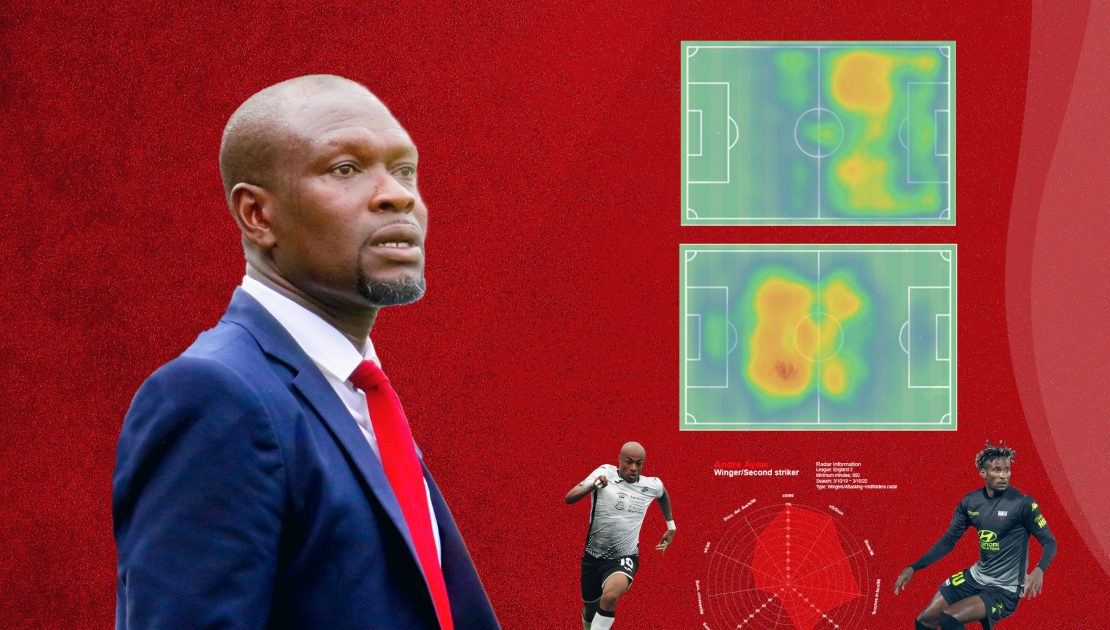
C.K. Akonnor’s first matches as Ghana coach gave an overdue glimpse into who he is as a coach and his plan for the team. Overall, it is arguable that neither score was an entirely fair reflection of each game. Ghana were certainly not as poor against Mali as the 3-0 loss scoreline suggested, although Les Aigles were impressively clinical. Against Qatar, the Black Stars performed better, although their opponents were very poor and continually provided avenues to attack.
In the first of a two-part series, we analyse Ghana’s attacking play in the October friendlies, also looking ahead to the next assignment – a 2022 Africa Cup of Nations (AFCON) qualifying double-header against Sudan in November. In the yet-to-be-published second part, we will look at the Black Stars’ defensive efforts, tying that to the team’s next batch of games.
Offensive shapes show Akonnor’s understanding of his key players
A major positive to emerge from Akonnor’s first matches as Black Stars’ coach was his apparent understanding of the tendencies of his key players in possession. Given the lack of time available during international windows to drill complex offensive structures, the most effective way to generate a functional attacking system is to identify complementary styles that can be combined in order to create a cohesive, effective whole. Akonnor’s early matches indicated an attempt to do so and an identification of how his stars want to play at least.
What are their styles?
Thomas Partey is undisputed as the best player in the side, but it’s arguable that he has been misused for a large portion of his international career. Partey excelled as a No.6 in a double pivot for Atlético Madrid, where he demonstrated considerable ball-winning ability alongside impressive close-control, balance and passing range, making him a dual-threat ball progressor. As such, he possesses considerable value as a deeper-lying midfielder. For Ghana, meanwhile, Partey has often been used as a No.10. With an absence of capable ball progressors behind him, Ghana often struggled to bring the new Arsenal man into matches.
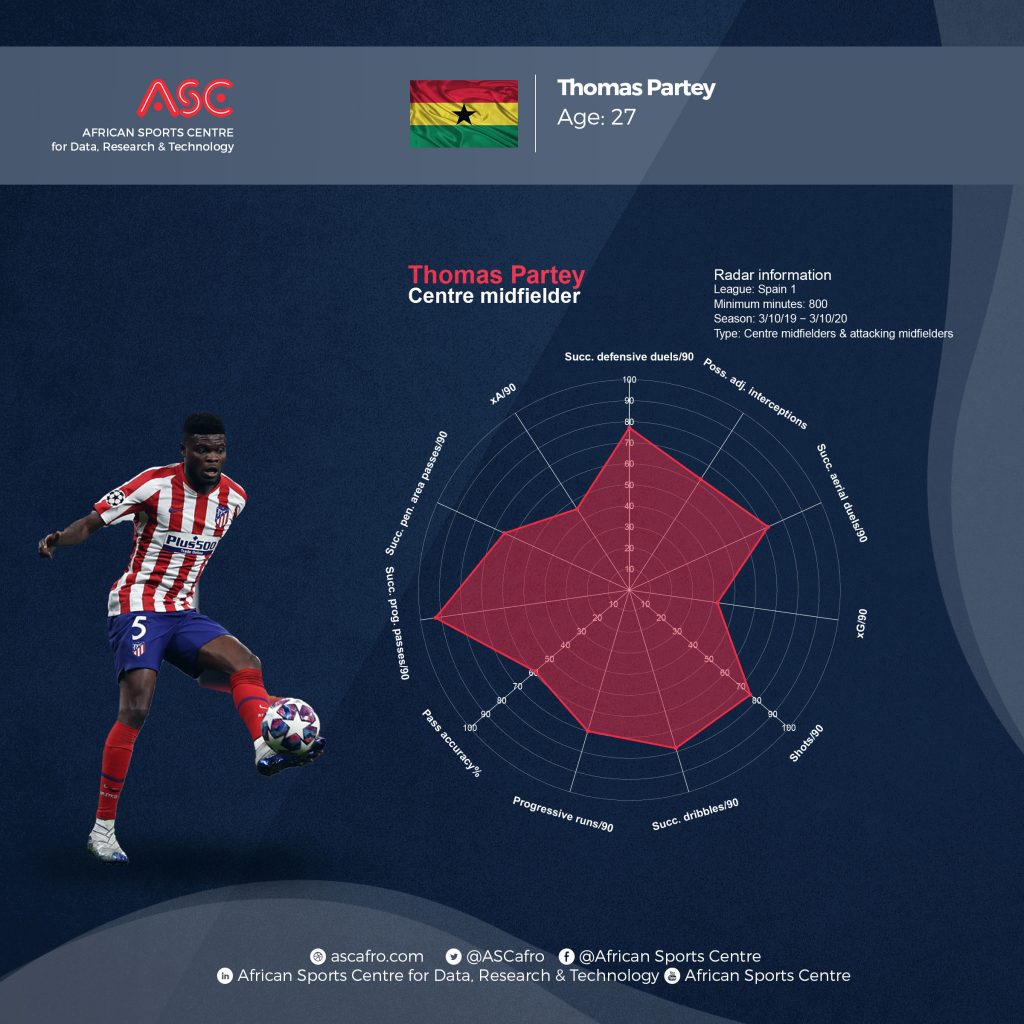
Jordan Ayew is another crucial player. The younger Ayew has stepped up his game in recent seasons, demonstrating a useful all-round ability as a centre-forward. His most notable attribute is his dribbling – he is in the 97th percentile among strikers for successful dribbles per 90 in the English Premier League in the past 12 months. Additionally, there can be little doubt that the Crystal Palace man has a very specific tendency, the accommodation of which will define his comfort in a team: Ayew likes to drop off to the left half-space to receive the ball (see below).
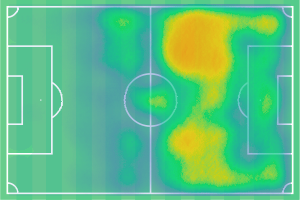
The elder Ayew, Andre, is also a player with an interesting skillset at this point in his career. His heat map (below) shows he is predominately a right-sided player, but one who once again operates in the right half-space or even through the middle as more of a conventional striker. His goal-scoring focus is also reflected in his radar (below). The Black Stars’ captain, therefore, is far from a conventional winger, with a style that is much closer to an inside forward or second striker. This too, needs to be reflected in his usage in a Ghana shirt.



Ghana vs Mali: Offensive Analysis

Starting midfield combines complementary skillsets, but second half changes reignite old issues
In the first match of the international window, Akonnor adopted a 1-4-3-3/1-4-1-4-1 shape at kick-off. Partey was one of the 8s alongside Bernard Mensah whilst debutant Alexander Djiku played as a No.6.
This midfield appeared to be a balanced one, with Partey and Mensah given the freedom to drop deeper to act as ball progressors or operate higher up the field between the lines to be a progressive passing target or to aid in the chance creation phase. Djiku was the counter-weight to their positional rotations and offered far less progressive intent.
This usage seemed to complement both Partey and Mensah’s skillsets. Nonetheless, a lack of quality ahead of them meant Ghana got few progressive rewards from the duo, even when players were found between the lines.


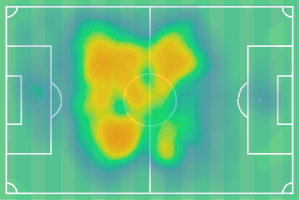
In the second half, the replacement of Mensah with France-based midfielder Emmanuel Lomotey altered the complexion of Ghana’s midfield. Mensah and Lomotey are radically different midfielders (see above). The Besiktas man is a progressive, creative player who roams the field, whilst the Amiens summer signing is predominantly a ball winner who sits deeper.
Furthermore, the team switched to a 1-4-2-3-1 formation, with Partey playing as a 10. With a lack of ball progressors in deeper areas, Arsenal midfielder saw less of the ball in the second half and was far less effective when he did receive it. This was a disappointing throwback to Partey’s past usage.
As such, this particular substitution was a concerning one, indicating a lack of consideration for the impact it would have on the team’s progressive ability. Even so, given Ajax’s refusal to release Mohammed Kudus for the friendlies, the selection of a squad with three No.6s and only two No.8s, it was hardly surprising to see Akonnor having difficulties adding central ball progression from the bench.
Akonnor attempts to use Ansah, Kamaldeen, Fosu & Mensah to complement the Ayews
Akonnor’s desire to accommodate the aforementioned tendencies of the Ayew brothers was reflected in the pieces he inserted around them in attack. Jordan was chosen to lead the line, with Andre playing off the right flank.

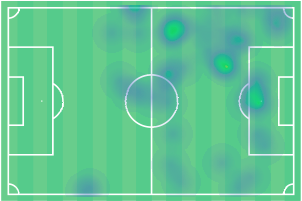
Akonnor also selected Eugene Ansah on the left flank. This was a selection that spoke to Akonnor’s desire to pick a hybrid player on the left side who would be willing to stretch the play vertically and move inside. Ansah, who has played as a centre-forward and a winger in Israel, offers this type of skillset, as did his replacement, Kamaldeen Sulemana. This player would push up (and ideally inside) to allow Jordan Ayew to drop into the left half-space. Ansah struggled with his positioning in the first half, however.
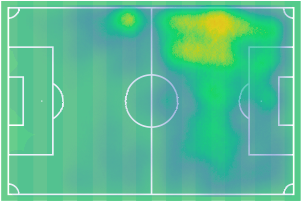
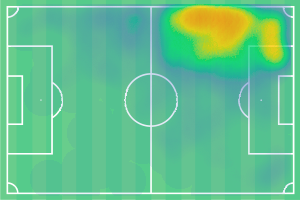
Furthermore, Akonnor selected two attacking options, Tariqe Fosu and Gideon Mensah, at full-back. Mensah is a naturally attacking left-back whilst Fosu is predominately a winger. Although the latter has spent much of his career on the left side, cutting inside, he has shown a willingness to offer width whenever he has played on the right. Therefore, both players had the ability to offer the width that would have otherwise been missing from the team, with Ansah/Kamaldeen pushing up and inside, and the Ayews operating in the half-spaces. The Black Stars did get into some decent offensive structures.
A lack of ruthlessness and positional problems
Ghana’s primary issues in attack against Mali were their lack of ruthlessness and their lack of quality. The latter contributed substantially to the former. When the Black Stars did play a progressive pass between the lines to establish a platform for chance creation, or if opportunities to shoot were created, the quality of touch, final pass or shot was sorely lacking.
Meanwhile, positional issues also served to make it challenging to progress the ball. These included Ansah and Andre Ayew often standing in the wide channel, making it harder for the full-back to impact the game on the overlap, and the full-backs not recognising situations to offer width themselves. With poor spacing and execution, Ghana struggled to create chances against Mali’s somewhat vulnerable defensive shape.
Ghana vs Qatar: Offensive Analysis
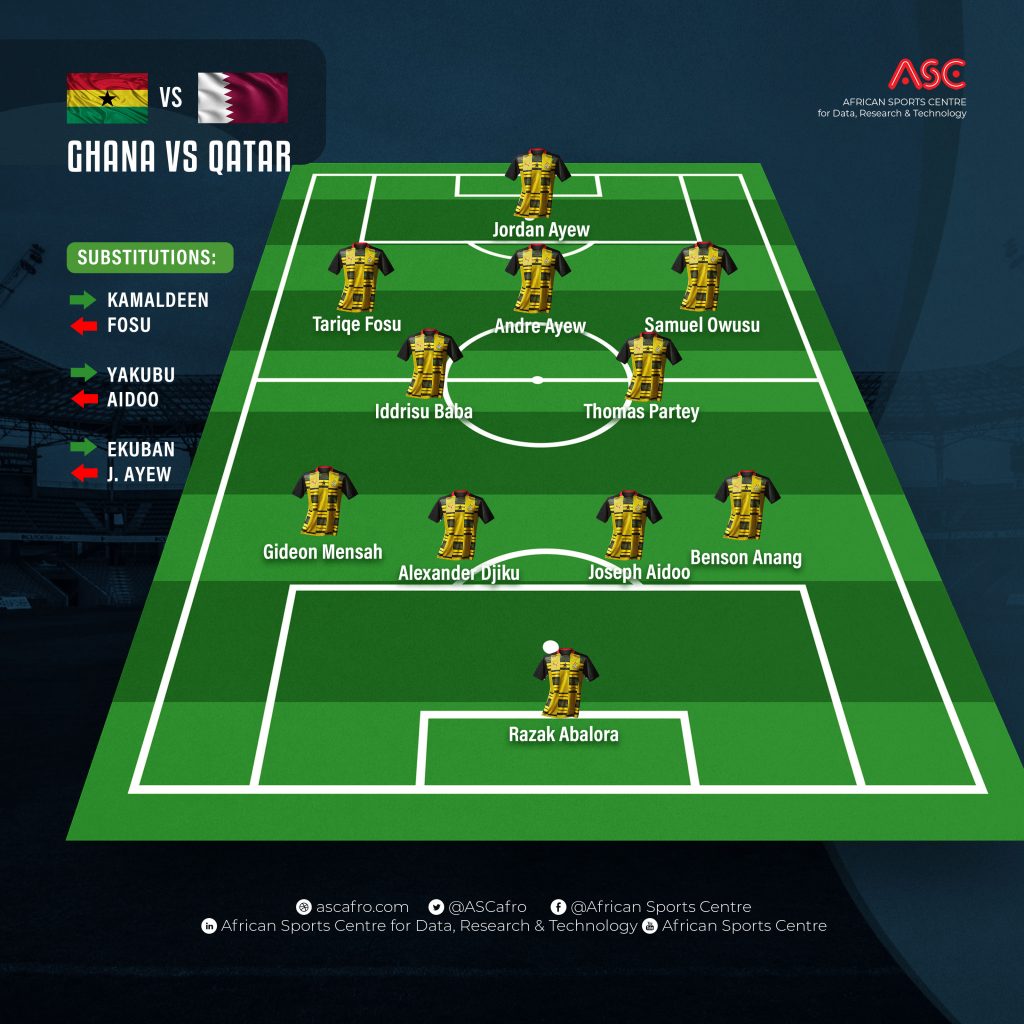
Against Qatar, Akonnor adopted a 1-4-2-3-1/1-4-4-2 shape. Once again, the personnel he chose around his three key men demonstrated the new Head Coach’s intent to accommodate their tendencies. Jordan was once again selected to lead the line, but in this instance, Andre was playing off or alongside him, as a No.10/second striker. Partey meanwhile, was now a member of a double pivot in midfield.
Thomas Partey impressive
Partey in particular had a hugely influential game against Qatar. Playing alongside the more offensively limited Iddrisu Baba, Partey was given the freedom to run the game for the Black Stars and he rewarded Akonnor with an impressive performance.
Whereas against Mali, the former Atletico Madrid ace only recorded 47 passes at 79% accuracy, against Qatar he more than doubled his passing output, making 97 passes at 89% accuracy.
Partey could drop towards the defenders to pick up the ball in deeper areas before spreading the ball across the field, he could create from higher upfield and he could dribble. Meanwhile, Baba offered positional balance.
Attacking quartet show promise, but the attack still lacked precision
Higher up the field, the Ayew brothers were paired with Fosu on his more natural left-flank (see below) and Samuel Owusu on the right side. The front four showed impressive fluidity given it was their first match together as a unit, with their respective tendencies complementing each other well. Also offering width were the full-backs, Benson Anang and Gideon Mensah.
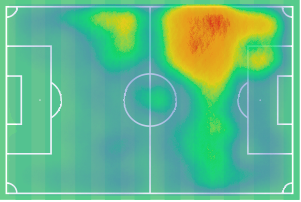
With the Ayew brothers’ aforementioned tendencies to play between the lines, it was up to Owusu and Fosu to play higher up the field on occasions to pin the defensive line. Pinning is the act of pushing higher up the field, thus, offering a viable threat behind the defensive line. This forces the defenders to either hold their line or drop back, potentially creating space in front of them.
Both Owusu and Fosu did a good job of synchronising their movements with the nearest Ayew brother, ensuring that space was created between the lines and the gaps created by the Ayews’ movement were threatened. Both full-backs also offered reasonable quality from the wide areas, where they regularly had substantial amounts of space.
With only one defender in the wide areas, Qatar’s 5-3-2 shape offered Ghana plenty of opportunities to exploit the flanks. The Black Stars did well to score score 5 goals, but it was still arguable that their execution in exploiting the opportunities presented to them was at times sorely lacking. The ball movement was often slow and/or inaccurate. Additionally, at times, it appeared the team was not cognisant of the expanse of space available to them to exploit in wide areas.
Despite their lack of accuracy, Ghana were still able to score 5 goals. This partly speaks to how poor Qatar were on the day, and also does demonstrate the Black Stars’ ability to create opportunities, particularly down the flanks.
Next steps
There are undoubtedly some positives to take away from Ghana’s offensive play in the first two matches of the Akonnor-era. Most obvious was his desire to accommodate the tendencies of his key players. Moving forward, Akonnor needs to continue to follow this approach, developing the team around his key men to create a cohesiveness that was, unsurprisingly, often lacking in these first two matches.
This development will certainly take some time and the team will need to execute far more effectively than they did in both matches. It will be interesting to see if there are some tweaks to the squad for the scheduled matches against Sudan in November. These tweaks could introduce players who are stylistically well-equipped to complement Akonnor’s key men.
Clearly, the selection of Fosu to play right-back turned some heads against Mali. Nevertheless, it showed Akonnor’s recognition of the need to identify a capable attacking presence on the right flank, given the likelihood that his right-winger would spend a lot of time playing inside. This necessity will likely only be enhanced if structural improvements are made. Anang has indicated in limited first-team appearances that he could be that player. He gave a solid account of himself against Qatar. In addition, Holland-based Robin Polley, as well as Ghana-qualified Jordi Osei-Tutu, are other attacking options who are currently gaining more senior minutes. Brighton and Hove Albion’s Tariq Lamptey will be a superb fit for the role should he take up Ghana’s offer to switch international allegiance from England.
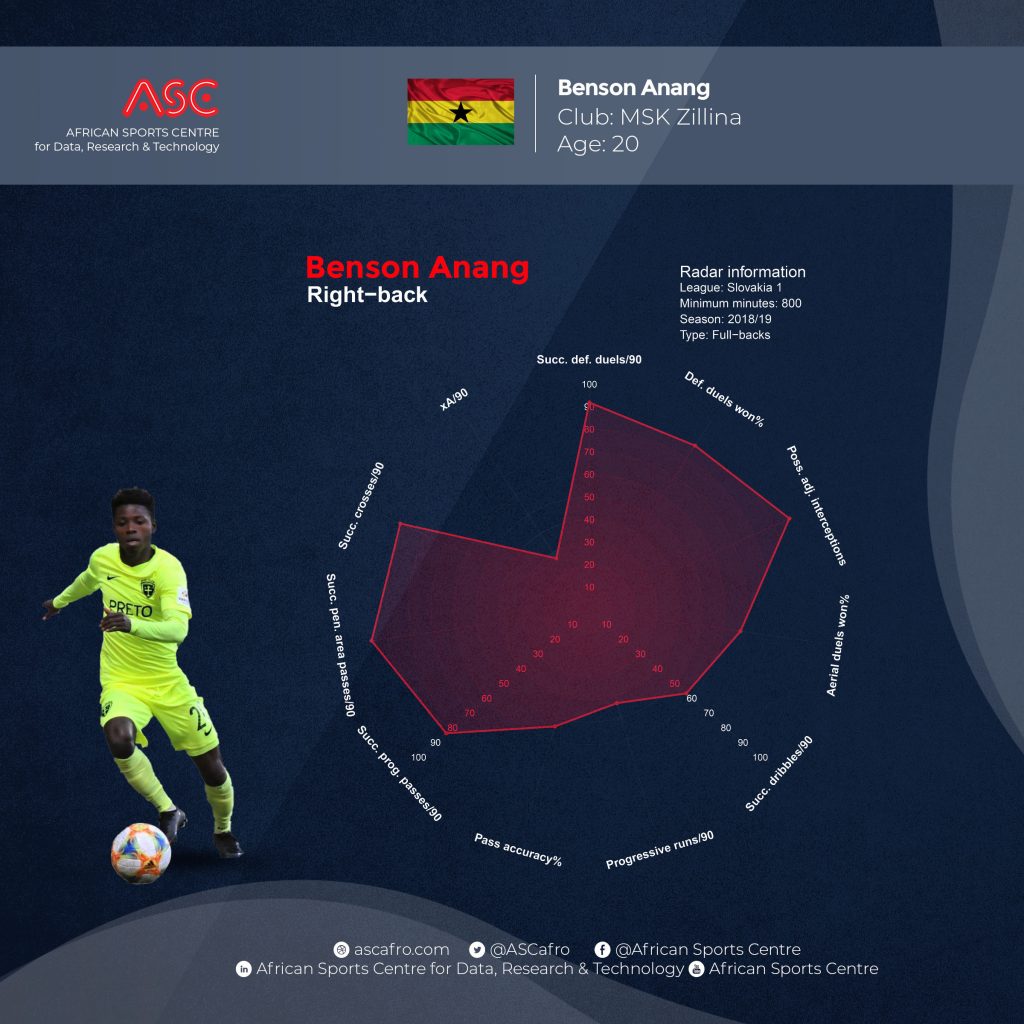
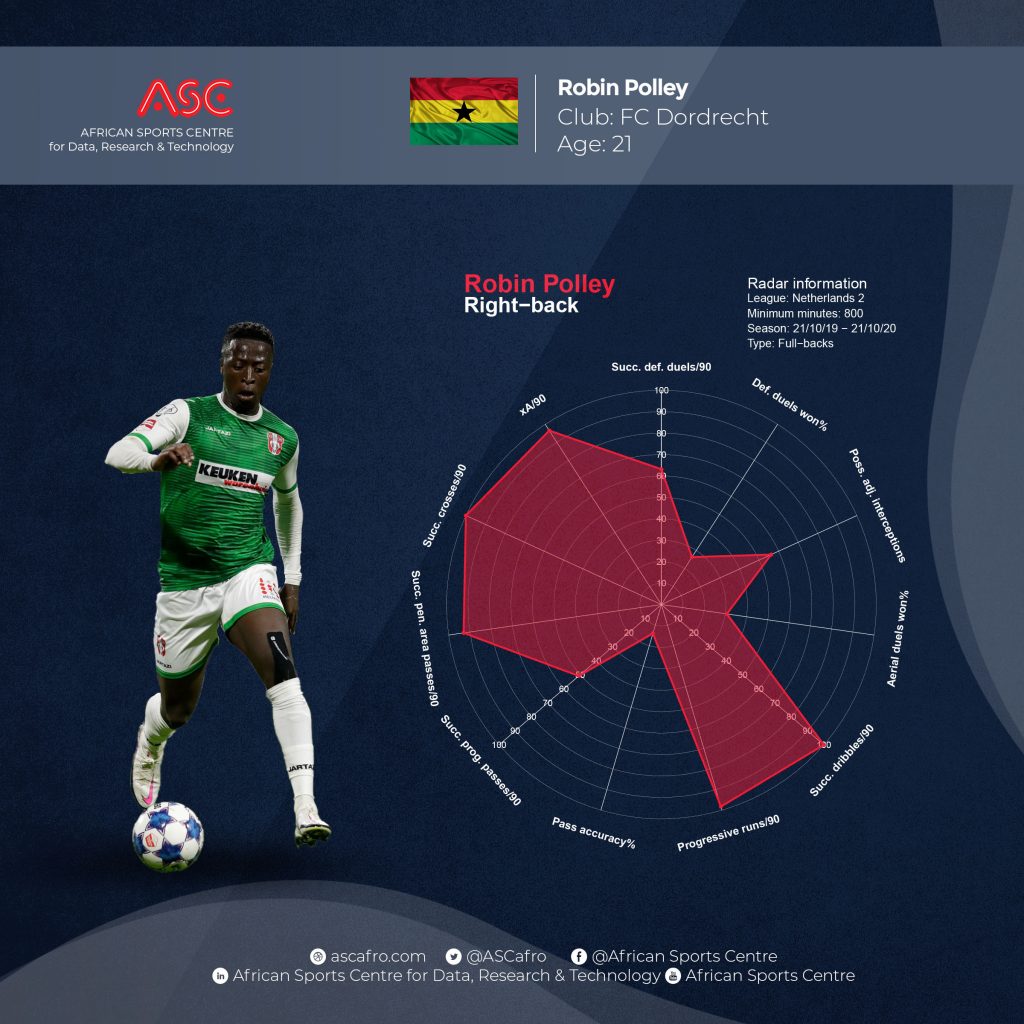
Fosu, meanwhile, would surely be better utilised higher up the field. Although he performed well at right-back, he showed against Qatar the multi-faceted threat he provides higher up the field. With Kamaldeen looking like a quality prospect, the left side of Ghana’s attack looks to have two highly capable options who should be selected when healthy to build their international experience.
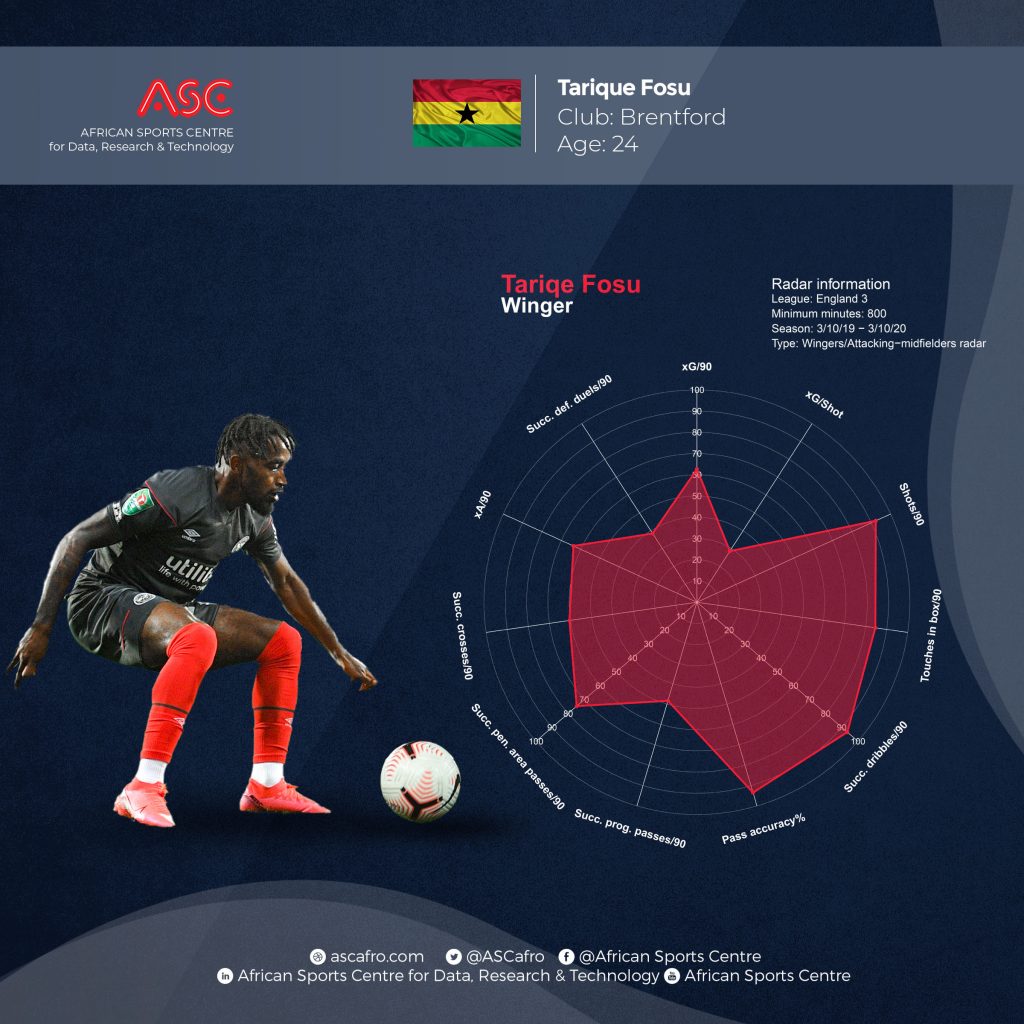

There are more question marks about the right side. Andre Ayew is more of a striker at this point (and squads may be selected with this in mind). Owusu is growing as an international player, offering an all-round skillset without being a lethal final third option. He nonetheless looks a useful member of the squad.

Other options on the flank who offer a noticeable goalscoring threat include Caleb Ekuban (who was a late call-up for the October friendlies and scored against Qatar) and Osman Bukari (now of Gent in Belgium). Emmanuel Gyasi of Spezia is another potential option who has had plenty of game time in the past year, although he has played more on the left side in recent seasons.


The other position with a substantial responsibility in the attacking phase that may see some shuffling is central midfield. As previously mentioned, it is arguable that the squad balance was poor, especially with Kudus prevented from travelling. Lomotey, Baba and Djiku are all No.6s with limited progressive or attacking contributions at club level. The likes of Fiorentina’s Alfred Duncan or Red Bull Salzburg’s Majeed Ashimeru offer a different skillset. KuPS attacker Bismark Adjei-Boateng, meanwhile, has impressed in Finland and could be worth further investigation.
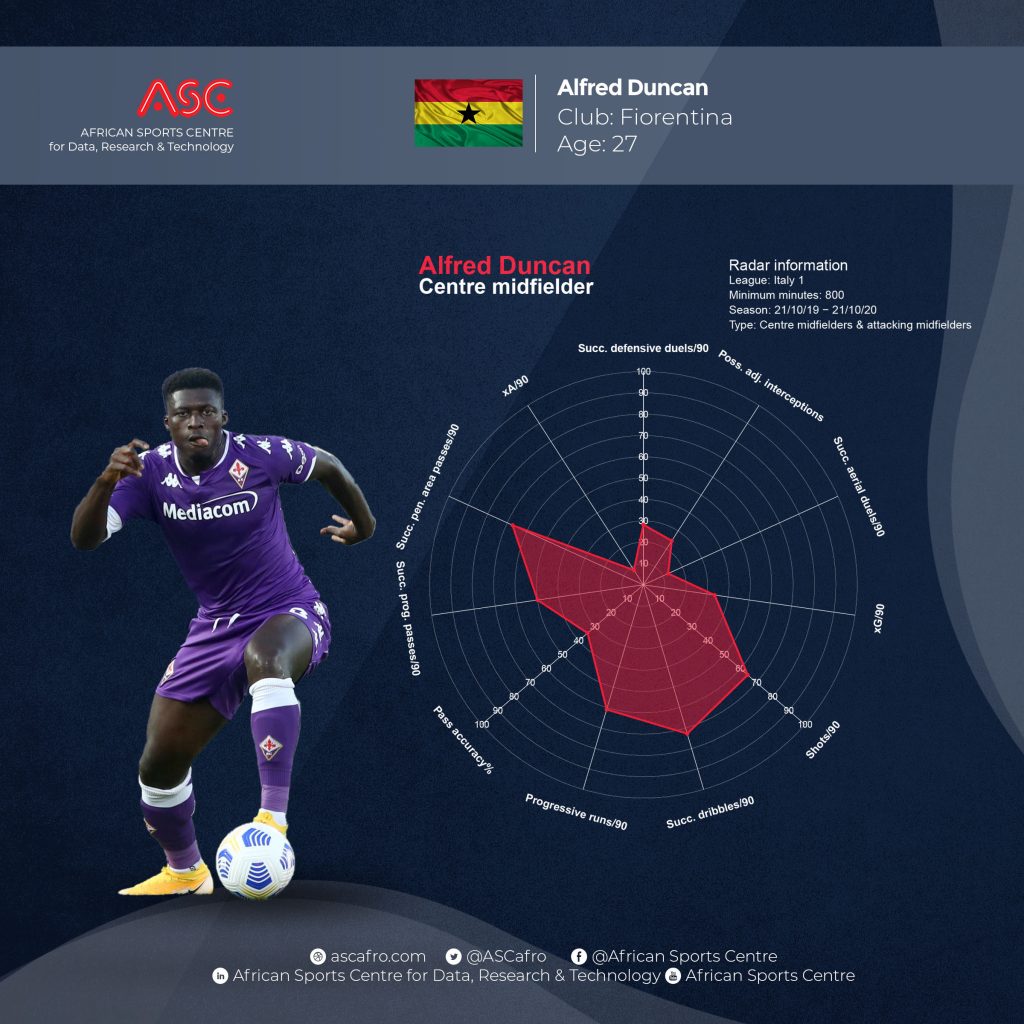


In addition to personnel tweaks, it will be interesting to see if Akonnor seeks to develop more of a clear identity in defensive-offensive transition moving forwards. Given the stature of Ghana’s next opponents (Sudan), establishing this aspect of the game is likely a lower priority than improving the team’s offensive structures as well as their (related) ability in offensive-defensive transitions.
Part 2 of this piece, analysing Ghana’s defensive approach will be published soon.
